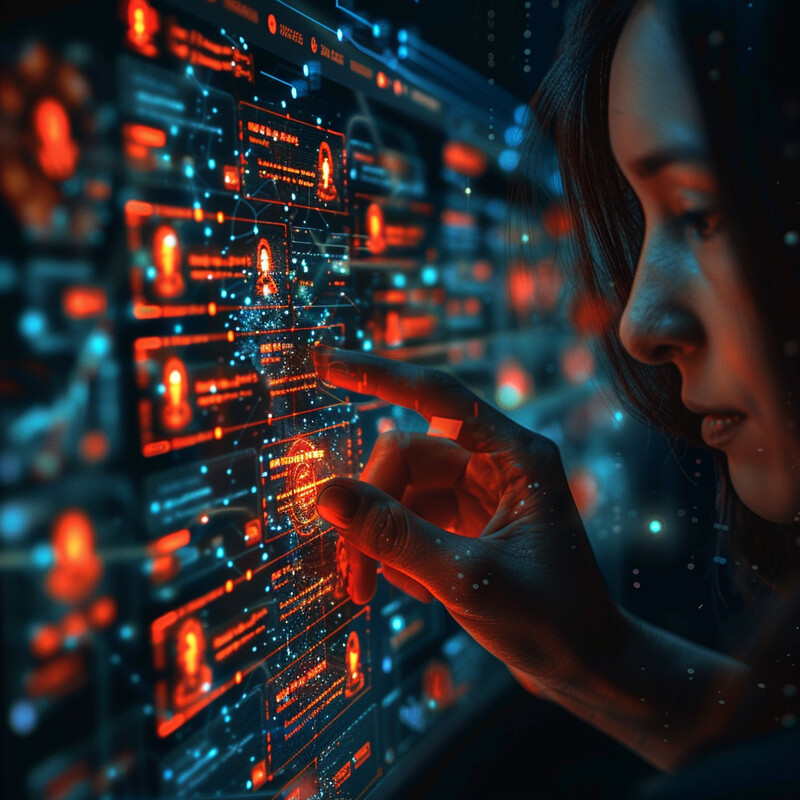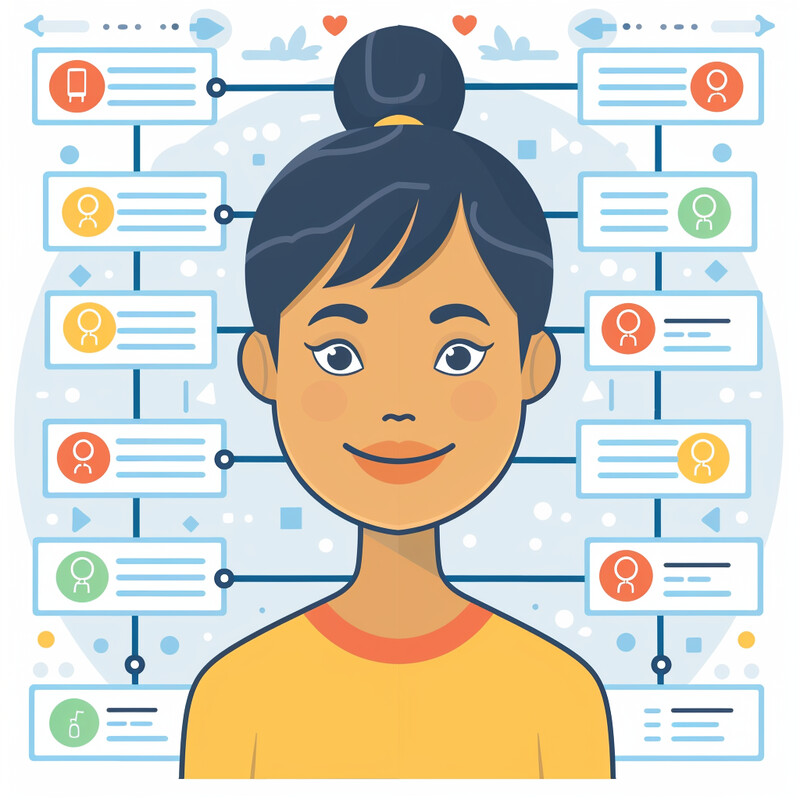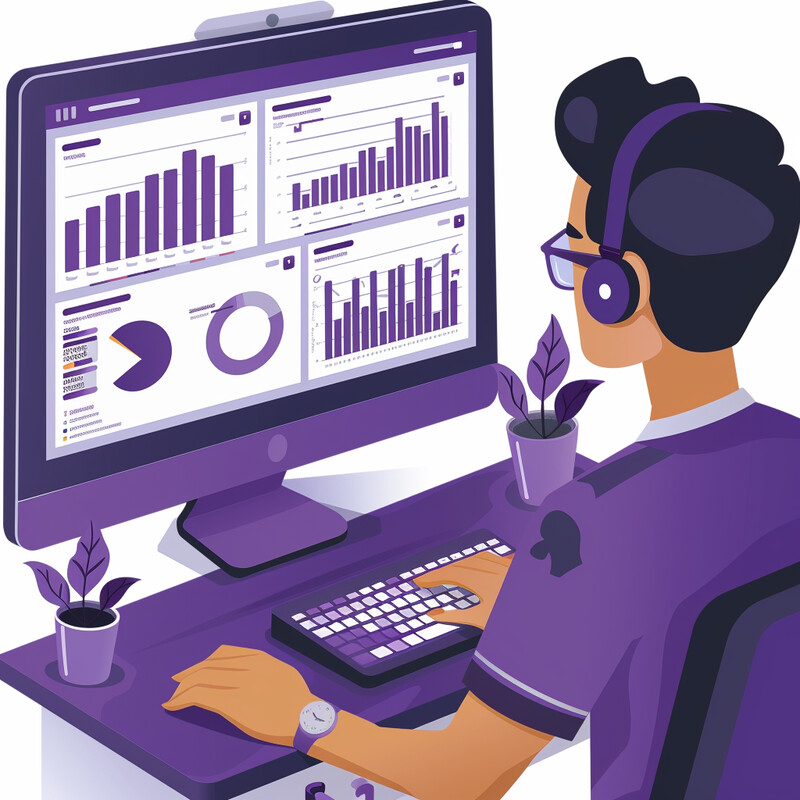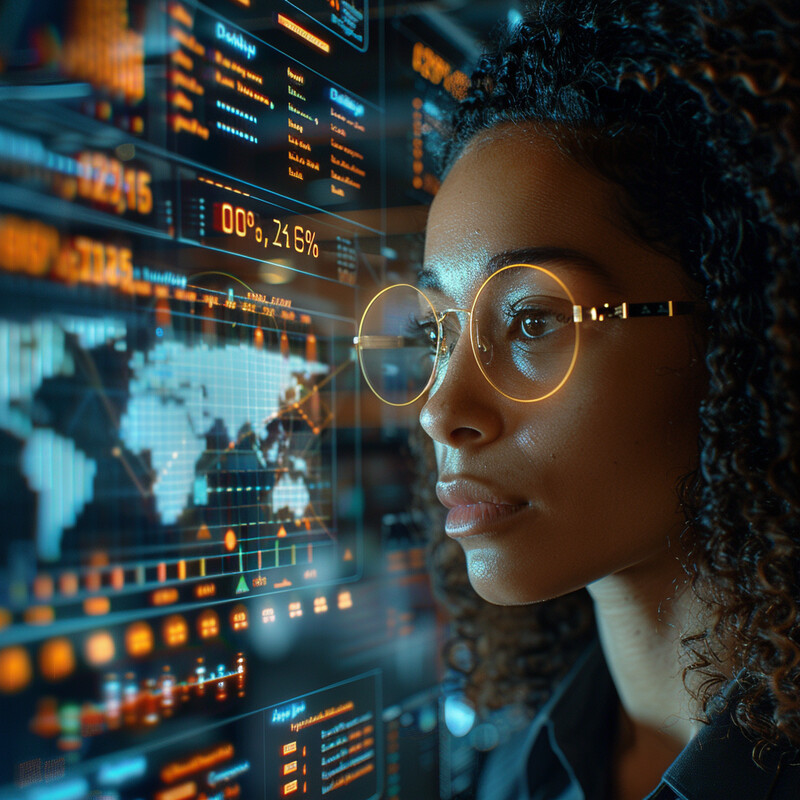1. Recruitment and Talent Acquisition
AI is transforming recruitment by automating the sourcing and screening of candidates. Algorithms can rapidly scan resumes and online profiles to identify qualified candidates based on predefined criteria, significantly reducing the time recruiters spend on initial screening. This efficiency helps organizations fill positions faster and may lower cost-per-hire by streamlining the talent acquisition workflow. Importantly, AI-driven tools in recruitment can be programmed to focus on job-relevant qualifications, which helps mitigate human biases in the early stages of hiring and can contribute to a more diverse candidate pool. Many recruiting platforms also use AI chatbots to handle routine applicant inquiries and schedule interviews, freeing up HR staff for more complex tasks. Overall, AI’s role in talent acquisition is largely about improving efficiency and consistency in hiring decisions while handling high volumes of applicants in a scalable way.

Over half of firms (51%) now use AI in their hiring processes, a figure expected to rise to 68% by the end of 2025.
2. Candidate Matching
In candidate matching, AI systems compare job requirements with applicant qualifications to find the best fit for a role. These tools analyze resumes, skill sets, and even assessment results to rank or recommend candidates for specific positions. By evaluating a wider range of data points (such as experience, skills, and even cultural fit indicators) than a human might manually handle, AI can improve the quality of hire by identifying strong matches that may be overlooked otherwise. This leads to more informed hiring decisions and can reduce turnover, since better-matched candidates are more likely to succeed and stay in their roles. In practice, AI-driven matching software helps recruiters narrow large applicant pools to a shortlist of candidates who not only meet the technical criteria but also align well with the company’s needs. The impact is a hiring process that is both faster and potentially more effective in predicting candidate success on the job.

Companies that use AI in their hiring process are 46% more likely to make successful hires (hires who perform well and stay with the company), according to a Harvard Business Review study.
3. Employee Onboarding
AI enhances employee onboarding by providing a more personalized and efficient introduction for new hires. Intelligent onboarding platforms can automatically deliver customized orientation schedules, training modules, and resources tailored to a new employee’s role and experience level. For example, AI chatbots are often used to guide newcomers through common onboarding questions or paperwork, available 24/7 to provide instant answers about company policies, benefits enrollment, or IT setup. By automating these routine onboarding tasks, AI ensures consistency (every new hire gets the necessary information) and speeds up the process, helping employees become productive faster. Moreover, AI can track a new hire’s progress through onboarding materials and offer additional support or training content if certain knowledge gaps are detected. This data-driven, responsive approach helps newcomers feel supported and integrated into the company culture more quickly, improving their initial job satisfaction and engagement.

In the United States, 68% of organizations are already using AI in their hiring and onboarding processes, reflecting rapid adoption of AI to streamline how new employees are brought into the company.
4. Performance Analysis
AI tools in performance analysis help organizations continuously monitor and evaluate employee performance with greater objectivity and depth. These systems can collect data from various sources – project management tools, sales results, customer feedback, peer reviews, and more – to provide a comprehensive view of an employee’s performance over time. By identifying patterns and trends, AI analytics can highlight an employee’s strengths or flag areas where additional training might be needed. Managers benefit from AI-generated insights such as performance dashboards or even predictive performance scores, which support more informed decision-making around promotions, bonuses, or professional development plans. In addition, AI-driven performance analysis can reduce the influence of common human biases or the recency effect (overemphasizing recent events) by basing evaluations on consistent data tracking. This leads to a fairer performance review process and ensures that high performers are recognized while employees who are struggling can be proactively coached.

Organizations that have adopted AI tools for performance management are about twice as likely to excel in their performance management outcomes compared to those that have not, indicating significantly better effectiveness in managing and improving employee performance.
5. Predictive Attrition Analysis
Predictive attrition analysis involves using AI and machine learning to analyze employee data and detect signs that employees might be likely to leave (“at-risk” employees). These AI systems examine a variety of factors – such as declines in engagement survey scores, increases in absenteeism, work patterns, tenure, promotion history, and even external labor market trends – to flag employees who exhibit behaviors similar to those of past employees who resigned. By identifying these patterns early, companies can intervene with retention strategies (for example, career development opportunities, conversations about job satisfaction, or adjustments to workload) to prevent unwanted turnover. The role of AI here is to process large datasets and find subtle correlations that a manager might miss, serving as an early warning system for attrition. The impact is potentially very significant: reducing turnover not only saves the costs associated with recruiting and training replacements, but also preserves organizational knowledge and morale by addressing issues before an employee decides to exit. This proactive approach to retention is a clear example of how AI can add strategic value to HR management.

Companies utilizing AI-based predictive modeling have seen roughly a 20% reduction in employee attrition rates, as the technology enables HR teams to identify at-risk employees and address their concerns before they decide to leave.
6. Personalized Learning and Development
In the learning and development (L&D) domain, AI helps create personalized training experiences for employees. Traditional one-size-fits-all training programs often fail to engage learners or address individual skill gaps. AI tackles this by analyzing an employee’s current role, performance data, skill set, and career goals, and then recommending targeted learning content (such as specific courses, articles, or coaching) that aligns with their needs. This might involve an AI-driven learning platform curating a custom curriculum for each employee or adapting in real-time to how well the employee is mastering the material (for example, offering extra practice in areas where the employee struggles). By tailoring development plans, AI keeps employees more engaged in training, since the material is relevant and neither too easy nor too hard. It also helps organizations up-skill and re-skill their workforce more efficiently, focusing training investments where they have the most impact. Ultimately, the use of AI in L&D leads to a more agile workforce, with employees continuously developing the exact competencies that benefit their career growth and the company’s evolving needs.

AI-driven corporate training programs can lead to a 57% increase in learning efficiency, meaning employees learn required skills faster and more effectively, which in turn boosts productivity on the job.
7. Employee Engagement
AI is increasingly being used to monitor and enhance employee engagement – the level of an employee’s commitment, motivation, and connection to their work and company. Tools such as AI-powered engagement survey platforms can analyze employee feedback in real time, including open-ended comments, to gauge sentiment and identify key drivers of morale. For instance, natural language processing algorithms can sift through survey responses or chat messages to detect themes in what employees are concerned about. AI can also automate frequent “pulse surveys,” which are short, regular check-ins, and flag changes in engagement levels or emerging workplace issues. With these insights, management can take timely action, like addressing a workload problem in a team or recognizing an employee’s contributions, before disengagement leads to burnout or turnover. Some companies deploy AI chatbots that act as always-available suggestion boxes or even virtual coaches that recommend activities to improve well-being. By handling the heavy data analysis, AI enables a more proactive and personalized approach to keeping employees engaged and satisfied at work, which is linked to higher productivity and retention.

Surveys show that 52% of organizations are using AI to monitor or improve employee engagement and satisfaction, illustrating how over half of companies have turned to AI tools to keep a pulse on employee morale.
8. Compensation Analysis
In compensation analysis, AI assists HR professionals in ensuring fair and competitive pay for employees. Traditionally, compensation teams must regularly benchmark salaries against market data and check for internal equity (for example, making sure pay is consistent across employees in similar roles with similar performance). AI can automate much of this work by continuously analyzing internal payroll data alongside external salary surveys or labor market information. With these tools, companies can quickly identify if any employee is paid significantly below market rates (risking losing them) or if there are unwarranted pay disparities among employees that could indicate bias or inequity. AI algorithms might also help in complex pay decisions by simulating different pay scenarios or optimizing bonus allocations based on performance metrics. Additionally, AI can ensure compliance with pay transparency laws and prevent pay compression issues by flagging them early. The outcome is a more data-driven approach to compensation, where decisions about raises, bonuses, and starting salaries are backed by comprehensive analysis, thereby improving employee trust in the fairness of the pay system and helping attract and retain talent through competitive compensation packages.

Studies indicate that AI-driven compensation models can improve pay equity by around 30%, by identifying and correcting unjustified wage gaps and inconsistencies that might exist within an organization.
9. Diversity and Inclusion
AI is also being leveraged to support diversity and inclusion (D&I) efforts in the workplace. In recruitment, for example, AI tools can anonymize resumes to reduce unconscious bias or advertise job openings to diverse candidate groups using algorithms that broaden outreach. AI-driven analytics platforms help HR track diversity metrics in real time – such as gender, ethnicity, or age representation at different company levels – and identify where bias might be occurring in hiring, promotions, or performance evaluations. By pinpointing these pain points (for instance, if a certain department lags in diversity or if promotion rates are imbalanced), companies can take targeted action, like bias training or revising policies. Some AI software also audits job descriptions for biased language and suggests neutral alternatives to attract a wider talent pool. Furthermore, AI mentors or matching programs can ensure that minority employees are connected with supportive networks and development opportunities. While AI is not a cure-all for deep-rooted bias issues (and if not carefully designed, can inadvertently perpetuate bias), when used thoughtfully it serves as a powerful tool to highlight disparities and keep the organization accountable to its inclusion goals through data. The impact is a more inclusive hiring process and work environment, which fosters creativity and fairness.

Research suggests that implementing AI in hiring can improve workforce diversity by approximately 35%, as AI tools (when properly designed to minimize bias) tend to select candidates based on merit and fit, widening the opportunity for underrepresented groups.
10. Automation of Administrative Tasks
One of the most immediate impacts of AI in HR is the automation of repetitive administrative tasks, such as payroll processing, timesheet approval, expense report handling, and benefits enrollment. By using AI (often in the form of robotic process automation or intelligent chatbots), HR departments can significantly reduce the manual workload associated with these routine processes. For example, AI-powered payroll systems can automatically calculate salaries, deduct taxes, and even flag anomalies, drastically cutting down on processing time and errors. Chatbots can answer common HR questions (“How do I update my health insurance details?”) instantly for employees, without HR staff intervention. Automating compliance reporting is another area – AI can keep track of labor law requirements or training certifications and alert the team if something needs attention. The net effect is that HR professionals are freed from clerical duties and can focus more on strategic initiatives like talent development, workforce planning, or employee engagement. From an organizational perspective, this not only improves efficiency and reduces costs (by minimizing manual errors and delays) but also makes HR services available to employees 24/7 through self-service tools. In essence, AI is helping to turn HR into a more agile and strategic function by taking over the administrative heavy lifting.

According to industry analysis, companies can save roughly 15% to 20% of HR staff’s time by using AI to automate administrative HR tasks, allowing those hours to be reinvested in strategic human resource planning and employee support.